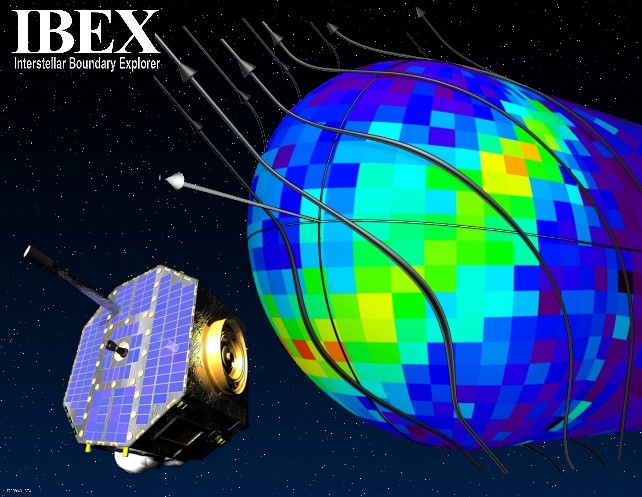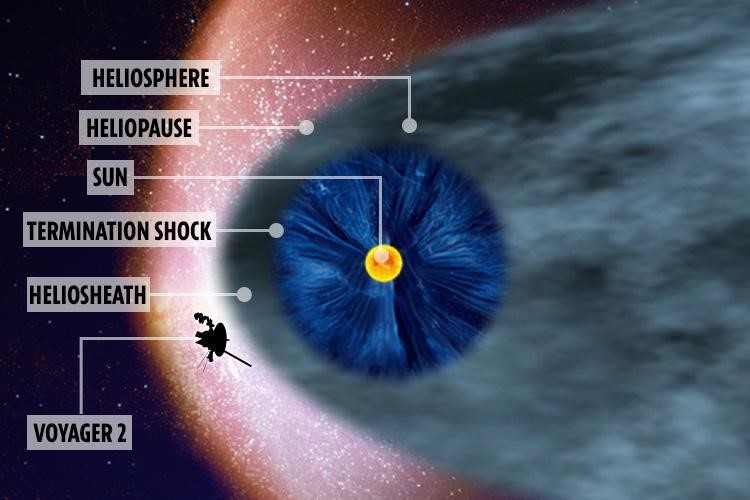





Disclaimer: Copyright infringement not intended.
Context
About the probe IBEX
Findings

|
HELIOSPHERE The heliosphere is the magnetosphere and outermost atmospheric layer of the Sun. It takes the shape of a vast, bubble-like region of space. It is the cavity formed by the Sun in the surrounding interstellar medium. The "bubble" of the heliosphere is continuously "inflated" by plasma originating from the Sun, known as the solar wind. As part of the interplanetary magnetic field, the heliosphere shields the Solar System from significant amounts of cosmic ionizing radiation; uncharged gamma rays etc. HELIOPAUSE Heliopause marks the end of a region created by our sun that is called the heliosphere. At heliopause the interstellar medium and solar wind pressures balance. TERMINATION SHOCK The termination shock is the boundary marking one of the outer limits of the Sun's influence and is one boundary of the solar system. It is where the bubble of solar wind particles slows down so that the particles are traveling slower than the speed of sound. HELIOSHEATH The "heliosheath", is a broad transitional region between the termination shock and the heliosphere's outmost edge, the "heliopause". |
|
PRELIMS PRACTICE QUESTION Q. Choose the correct answer with reference to the following statements. A. Interstellar Boundary Explorer (IBEX) was launched in 2008 by European Space Agency to map the edge of the solar system. B. During its lifetime, IBEX has reported that the heliosphere has no bow shock, an area of higher density and energy where the sun’s magnetic field encounters interstellar plasma. 1) A only 2) B only 3) Both A and B 4) Neither A nor B Answer: 2 |
https://www.space.com/nasa-ibex-flight-computer-normal-march-2023









© 2026 iasgyan. All right reserved